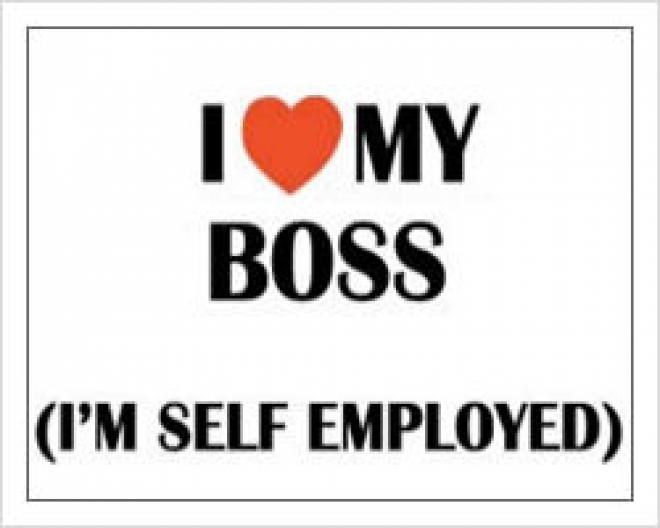
Scheduling Meetings Effectively When You’re Self-Employed
It’s important for all professionals to use their time efficiently. But it’s particularly essential for the self-employed, who have far more discretion about how to structure their days.
Without corporate mandates such as weekly team meetings or biweekly project check-ins, entrepreneurs have the ability to wipe out bureaucratic red tape and reach new heights of productivity. But far too often they end up at the other extreme, frittering away their days because they’re unsure of how to leverage their autonomy.
Here are four strategies self-employed professionals can use to schedule meetings more effectively.
First, it’s important to understand the full cost of a meeting. Especially if you’re dealing with clients or colleagues who work in corporations, “let’s have a meeting” may be the default response to any issue. That causes its own problems — one study showed the average employee attends a whopping 62 meetings per month — but logistically, it’s not that much of a problem. Their employees are either on-site or can be conferenced in, so a 90-minute meeting takes 90 minutes.
But as a freelancer or entrepreneur, you’re likely based somewhere else. In the early days of my marketing strategy consulting business, when I had clients on retainer with whom I met every week, an in-person meeting took a full half-day: 90 minutes (with occasional spillover), plus 45 minutes of travel time on either end. An accurate time estimate can help you understand the full cost to your productivity, so you can properly calibrate your threshold for consenting to a meeting.
To that end, it’s essential to set ground rules for when an in-person meeting is necessary. Clients love to schedule “check-in meetings,” in which team members update each other about progress — and often use the opportunity for office politics and to boast about their accomplishments. That’s not a good use of anyone’s time. Before agreeing to attend a meeting, ask pointed questions about the agenda. Updates can and should be handled through an asynchronous method, like email or chat. You should only agree to attend if an important issue needs to be discussed and decided, and if your participation is key to a good outcome.
Y Combinator founder Paul Graham famously wrote about the “manager’s schedule” — a tightly packed succession of meetings — versus the “maker’s schedule,” which allows for large blocks of unstructured creative time. For self-employed professionals, who need to wear both hats, one variation (which I follow) is to break your schedule into “manager days” and “maker days,” and cluster your meetings on one to three manager days per week. The days are long and intense, with back-to-back meetings, but they allow for unfettered productive work on the other days.
This is especially important if you must travel for your meetings; if you can tackle multiple meetings downtown on one day, you’ve saved yourself hours of painful commuting. Of course, it’s important to be flexible and understand that some situations — unexpected news, an important client request — warrant breaking your patterns. However, you can strive to reorient accordingly, so even if Tuesdays are normally your meeting days, if a critical Thursday meeting arises, you could take two “manager days” that week and none the next, to balance out your time allocation and ensure your overall productivity.
Finally, meetings — which require active listening and participation, and a quick and thorough reading of others’ emotional cues — can be exhausting. That’s why, where possible, it’s useful to standardize certain elements so you can focus more deeply on the task at hand. I have one friend who, finding internet dating tiring and overwhelming, has found a nearby bar to which she invites all her first dates. Knowing in advance where she’s going, how long it will take to get there, and what she’ll order makes the rest of the process feel more manageable. Similarly, if you can, set a standard meeting location and agenda — for instance, “First we discuss projects in Asia, and then South America, and then Europe.” Having that template in place lessens the risk of decision fatigue setting in before the gathering starts.
Many people complain about the endless meetings in a corporate environment. But even when they seem to quash productivity, they provide a structure to one’s day that’s lacking when you’re self-employed. Entrepreneurs, blessed with this freedom, need to learn to deploy it wisely — and scheduling meetings effectively is one of the best places to start.
Office Evolution Columbus
At Office Evolution Columbus, we understand the unique challenges of being a solopreneur, and we have designed our services with the modern day, flexible, entrepreneur in mind. Our Virtual Office or Entry Level Services ranges from a private mailbox, to meeting space, to phone answering service providing the support you need in your entrepreneurial journey.
We also offer the ideal combination of a Coworking Community and Private Offices. We serve the Columbus metropolitan area with 3 locations, so when you start looking at office space near me or a conference room near me or a meeting space near me, we are close to Powell, Dublin, Hilliard, Grove City, Worthington, New Albany, Westerville, Bexley, Blacklick, Clintonville, Upper Arlington or Reynoldsburg, choosing Office Evolution Columbus in Dublin, Worthington or Easton Town Center will help your budget remain flexible, with more money to spend on the things that matter most to your business.
Contact us today to set up a tour at our Dublin, Worthington or Easton, Ohio locations.
Dublin – [email protected] (614) 495-9274
Easton – [email protected] (614) 944-519
Worthington – [email protected] (614) 985-3600